The 12 Most Colorful Fall-Blooming Flowers in Washington
The most colorful fall-blooming flowers in Washington tend to emerge in mid-to-late summer and continue to produce beautiful colors until winter frost arrives. After frosty conditions descend, hellebores, witch hazel, and mahonia take over. Until these classic winter staples bloom, here are 12 of the most colorful fall flowers for Washington that suit its USDA hardiness zone 6b.
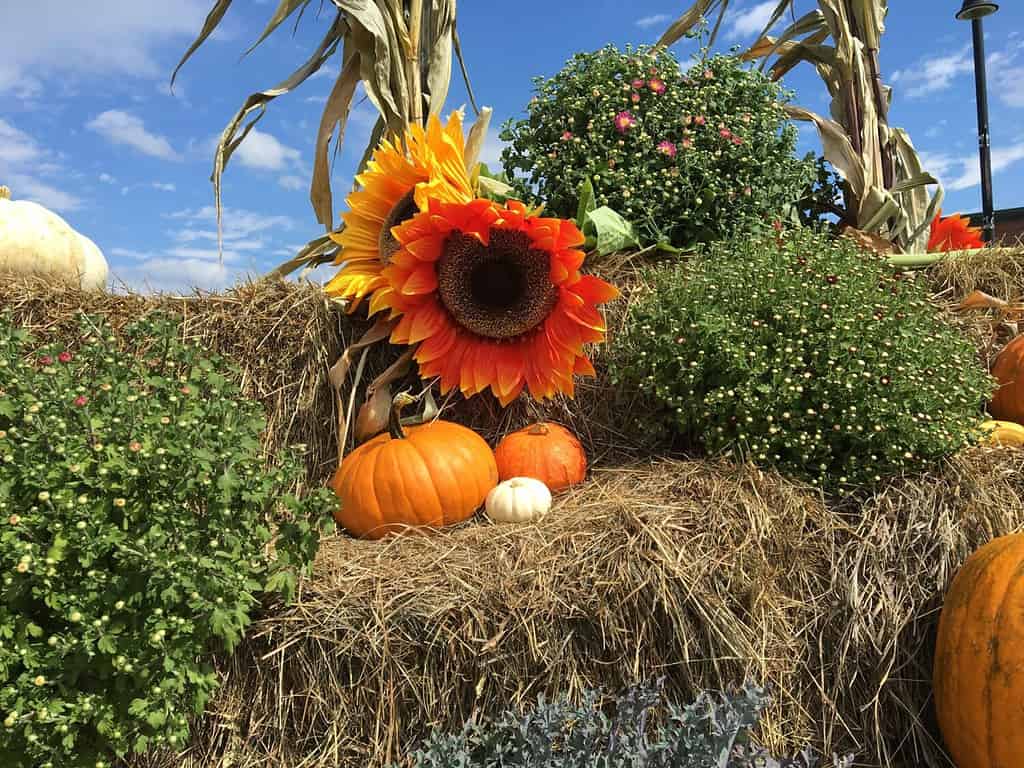
©Shenty1/Shutterstock.com
1. Abelia
Evergreen abelia is an overlooked tough and compact shrub. Its graceful arching branches bloom bell-shaped white or pink flowers from summer until late fall with a knockout scent. Hummingbirds and bumblebees adore abelia’s bell-shaped flowers because they’re so easy to access.
Plant 36 to 72-inch tall abelia in full sun or partial shade in well-drained soil. Its foliage emerges in spring and some varieties have variegated patterns. Come fall, not only does abelia display colorful flowers, but its foliage matures to glowing golden yellow.
If you’re looking for evergreen structural shrubs with late fall color, abelia is hard to beat.

©Traveller70/Shutterstock.com
2. Hardy Fuchsias
Hardy fuchsias enjoys the cooler northwest’s climate, preferring to bask in partial sun and avoid humidity. These deciduous South American native beauties boast some wonderful colors. The most vibrant sing in hot pink and purple, but if you prefer a more muted palette, white and pale pink brighten up a shady border.
Pollinator magnet hardy fuchsias require moist soil or their fall-blooming flowers drop off in dry conditions. Containerized hardy fuchsias need a bit more attention, because pots dry out faster than soil.
Plant hardy fuchsias out in late spring. They grow from four feet to ten feet tall depending on the variety. In partial shade with moist soil hardy fuchsias flower at the back end of May until the first frosts in late September.
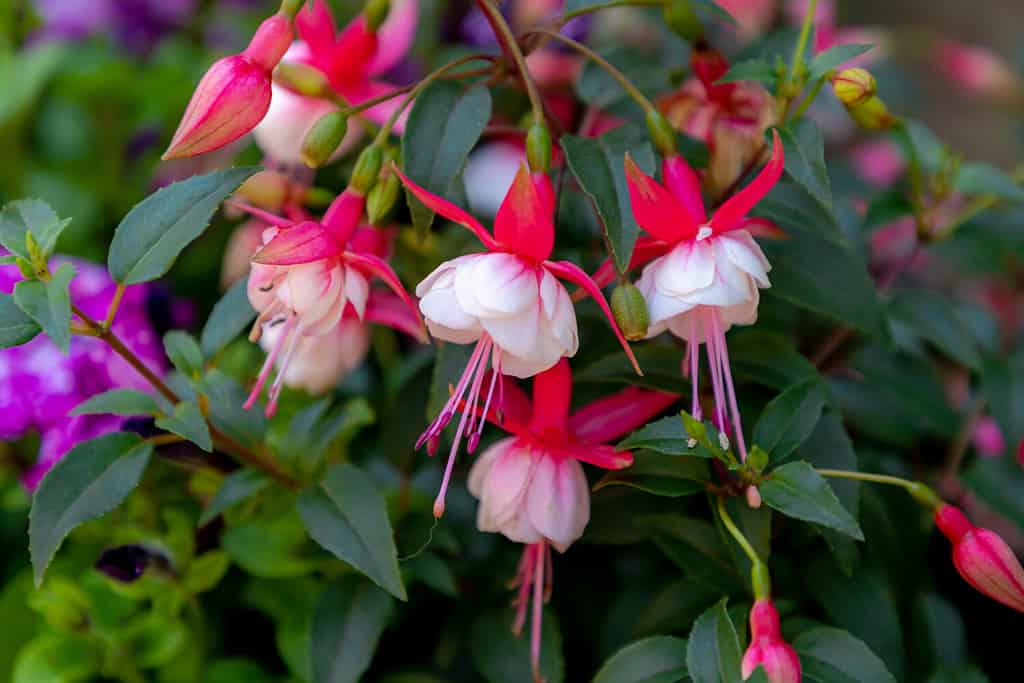
©Wut_Moppie/Shutterstock.com
3. Pansies
Pretty annual pansies bloom in early fall and tough out frosty weather. It’s not rare for pansies to flower on Christmas day. With so many varieties on offer, Washington gardeners can always find something to suit their tastes. From burgundy and gold to yellow, purple, red, and orange, winter pansies glow under dark skies.
Fall-blooming pansies need regular moisture, full sun to part shade, and fertile soil. Container displays benefit from fertilizer too. For the longest lasting (even to springtime!) display, choose a spot that’s sheltered from wind and regularly deadhead spent blooms.
Plant winter-blooming pansies in late summer and they’ll fill a fall yard with rich warm color.
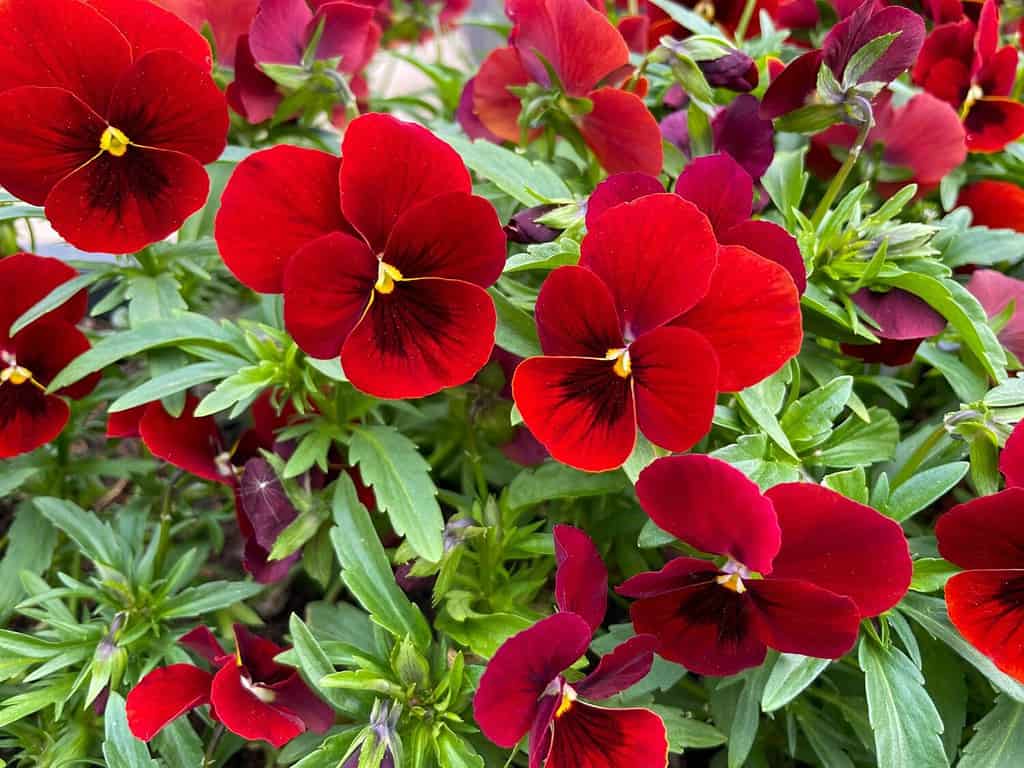
©Lapa Smile/Shutterstock.com
4. Chrysanthemums (Mums)
Classic mums grow cheerfully throughout summer and into late fall with the right care. They come in many shapes, sizes, and colors and they bloom in borders or containers equally well.
Some of the most popular fall-blooming mums in Washington have burgundy, gold, yellow, cream, and bronze tones. They are popular in Halloween pumpkin displays!
Plant out mums in late spring in fertile, well-drained soil and water them regularly. Chrysanthemums bloom continuously, so regular fertilizer is essential to ensure they reach fall in good health. However, if you don’t want to take care of mums all summer, plant fall varieties in late September. Fall-time mums go on sale at the end of August when summer blooms begin to fade. They have large colorful heads and a rich array of warm colors.
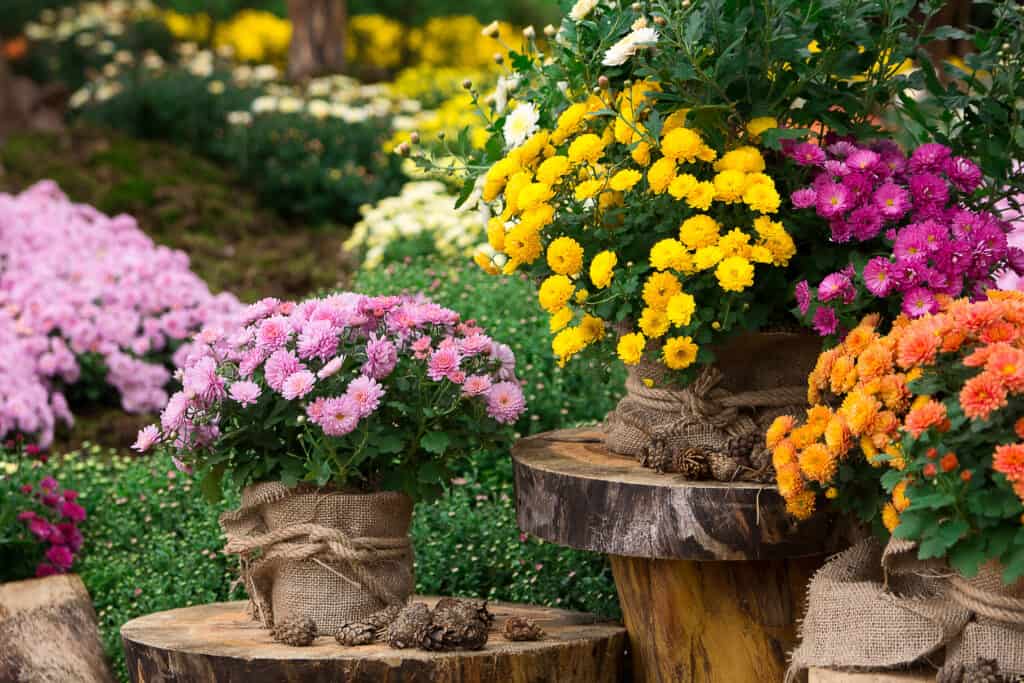
©Savina Nataliia/Shutterstock.com
5. Coneflowers
Summertime native coneflowers are a garden staple for pollinator-friendly, low-maintenance spaces in Washington and the good news is they continue to bloom in fall, only dying off when frosts hit hard.
Perennial coneflowers begin to bloom in July. If you’re planting out for the first time, it’s best to get them in during early spring, but fully-grown coneflowers are popular fall flowers in garden centers, too.
Coneflowers reach 24 to 36 inches tall and form a 24-inch wide clump depending on the variety. They love full sun but cope in partial shade. Drought tolerant and rarely affected by pests or disease, coneflowers are a reliable Washington fall blooming flower.

©Media Marketing/Shutterstock.com
6. Asters
Dependable asters bloom in fall and they come in a wide variety of colors. The most common is purple with a yellow, daisy-like center, but hot pink and white versions are popular with Washington’s bees and butterflies, too.
Asters range from just one foot tall to six feet and spread up to four feet wide. They prefer full sun and fertile, regularly watered soil. Partial shade is acceptable to this fall blooming staple, but expect fewer flowers than full-sun dwellers. If you can’t find a sunny spot in the fall, try wood asters that prefer shady conditions.
Plant asters in early fall for a grand finale of perennial color.
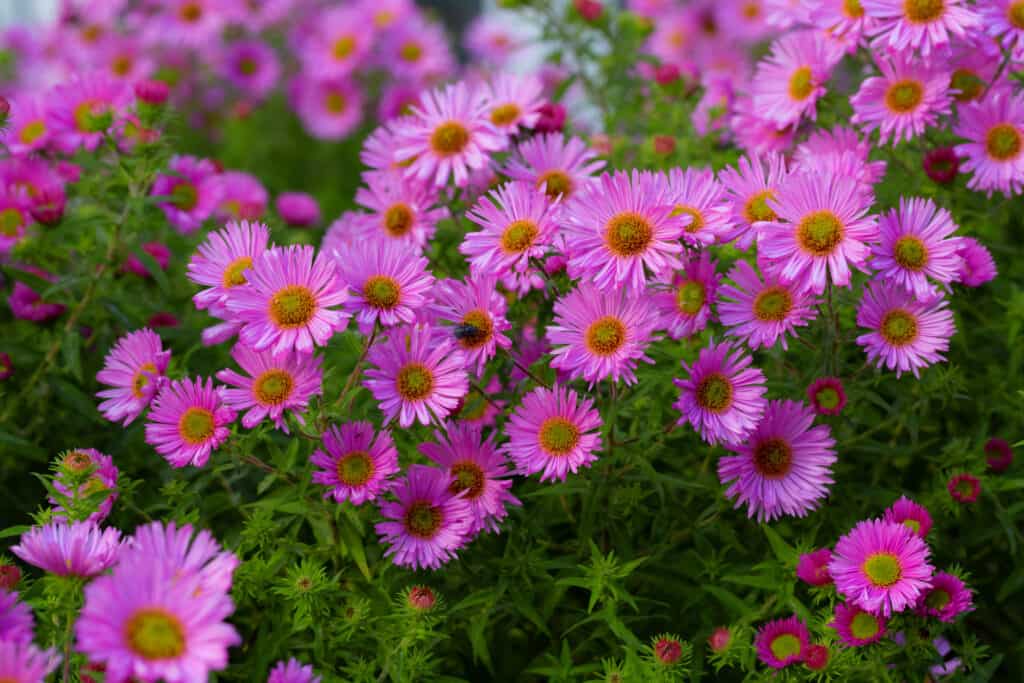
©iStock.com/Inna Giliarova
7. Goldenrod
One-to-five-foot tall perennial goldenrod is a native wildflower that produces inflorescences of bright yellow flowers on spikes in fall. Its feathery golden tips bring color, movement, and sound to Washington’s fall gardens and attract many beneficial insects, some of which hibernate in its winter foliage.
Drought-resistant goldenrod enjoys full sun to partial shade in flower borders and large well-watered containers. It’s an interesting change from bright flowers and requires virtually no maintenance. Expect its inflorescence from late August until the frost.
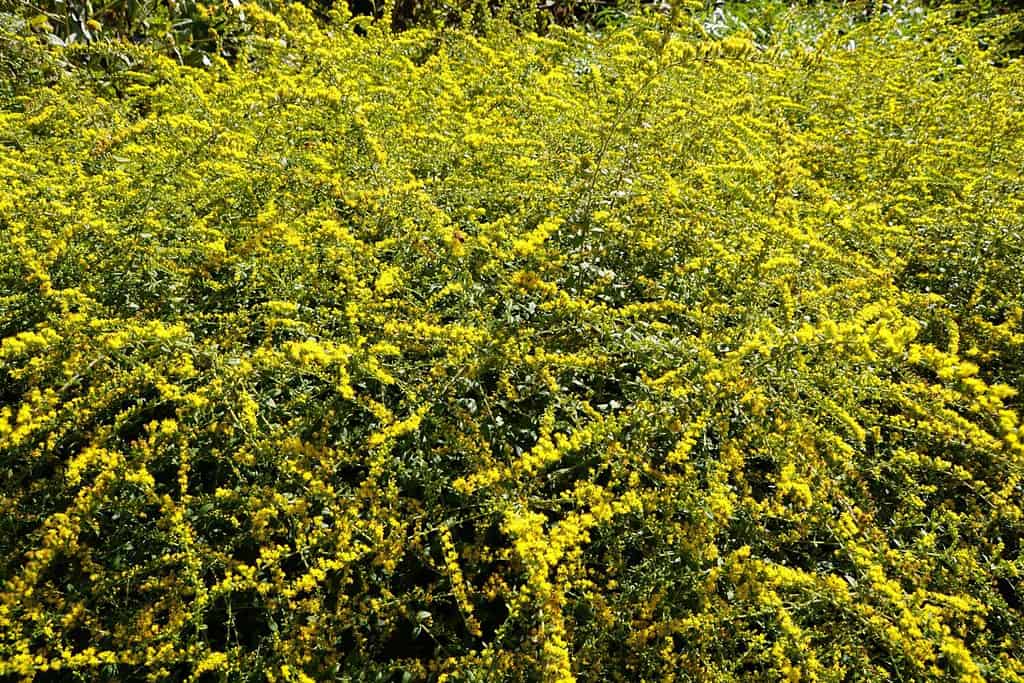
©Khairil Azhar Junos/Shutterstock.com
8. Caryopteris
Caryopsis is an upright shrub with blue-purple blooms from July to the frosts. In Washington’s gardens bluebeard, as it’s commonly called, provides nectar for pollinators and habitats for beneficial insects.
Deciduous in Washington, caryopteris reaches three-to-four feet tall and its dark green glossy foliage sets off fall-blooming blue flowers. If you prefer a hit of pink with golden foliage, shop around! Pink Perfection or Beyond Pink are excellent pink caryopteris varieties that bloom in fall.
Plant caryopteris out in early fall, before temperatures begin to drop, so it has time to establish before the frosts threaten. Full sun is best, but it’s not particular about soil as long as it’s well-drained.
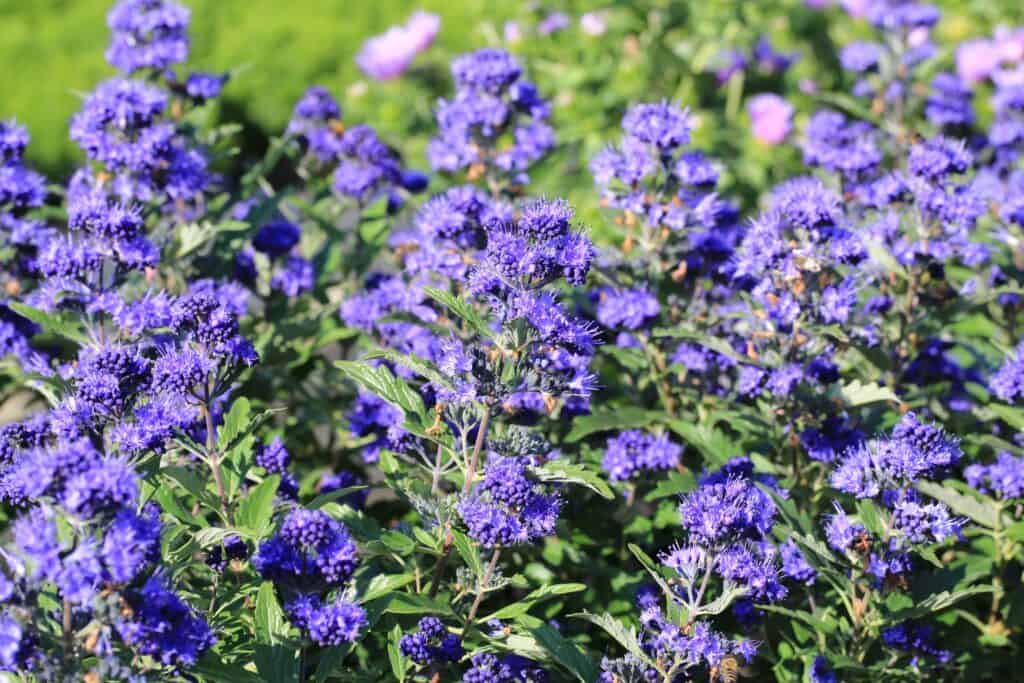
©Traveller70/Shutterstock.com
9. Rudbeckia
Most folks know rudbeckias as black-eyed susan. These richly colored blooms arrive during mid-summer in burgundy, chocolate brown, or vibrant yellow depending on the cultivar, but they all have black center buttons in common.
Perennial black-eyed susan blooms in fall and dies off when winter’s frost arrives. It’ll re-emerge the following summer.
Plant rudbeckia in late spring when the soil warms up, and give them plenty of water. In full sun, blooms first emerge in July. Keep deadheading to encourage lots of stunning fall-time flowers from this classic hardworking plant.
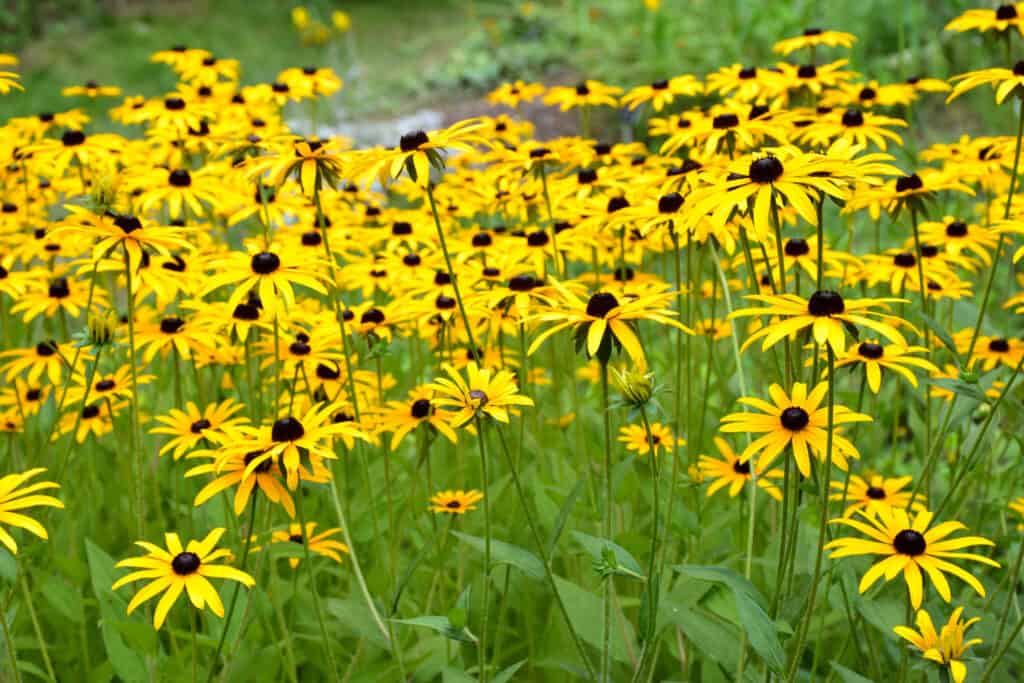
©Irena Socratous/Shutterstock.com
10. Hardy Geraniums
Hardy geraniums, also known as cranesbill due to their flower shape, are not the same as pelargoniums which folks often call geraniums. Instead, perennial hardy geraniums bloom in July and continue to produce flowers until winter arrives with its frosty conditions. At this point, hardy geraniums die back.
One of the best hardy geraniums is the popular 24-inch tall Rozanne. This beauty produces masses of white-eyed purple flowers in fall. It’s a sterile geranium so it won’t self-seed around the yard. Other hardy geraniums include white, pink, and deep purple shades.
This tough perennial loves full sun, regularly watered soil, and benefits from regular fertilizer in summer.
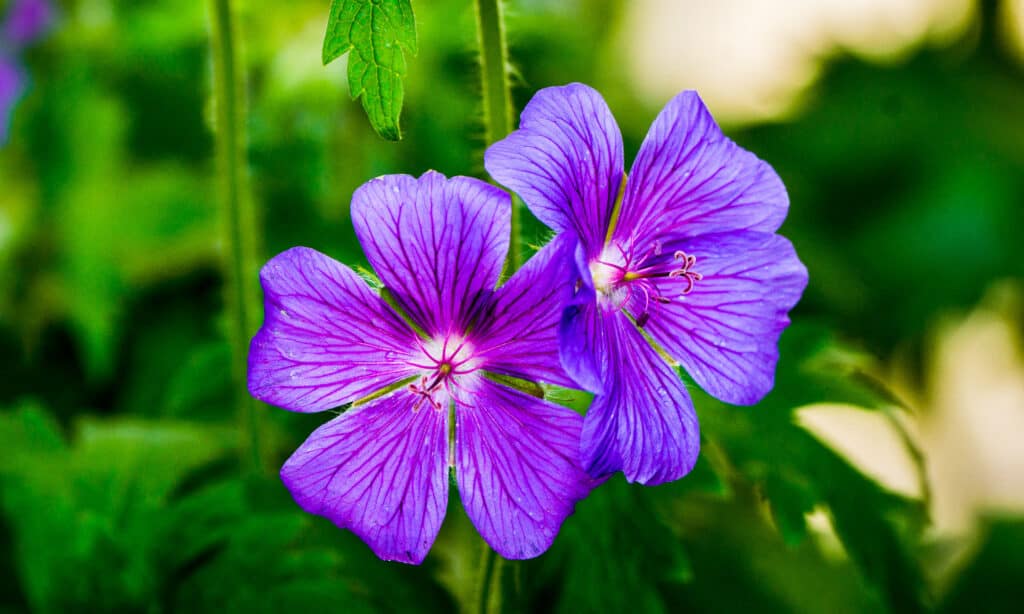
©Andrew Pustiakin/Shutterstock.com
11. Agastache
Bee and hummingbird favorite agastache produces its dependable spikes of blue in late summer until winter’s frosts. It’s a tall three-to-four-foot elegant perennial that suits the back of a border and low-maintenance, wildlife-friendly gardens.
Agastache loves full sun, but part shade works too, just make sure its soil is well drained because this handsome butterfly magnet doesn’t like damp toes. It’ll die down over winter and re-emerge in late spring.
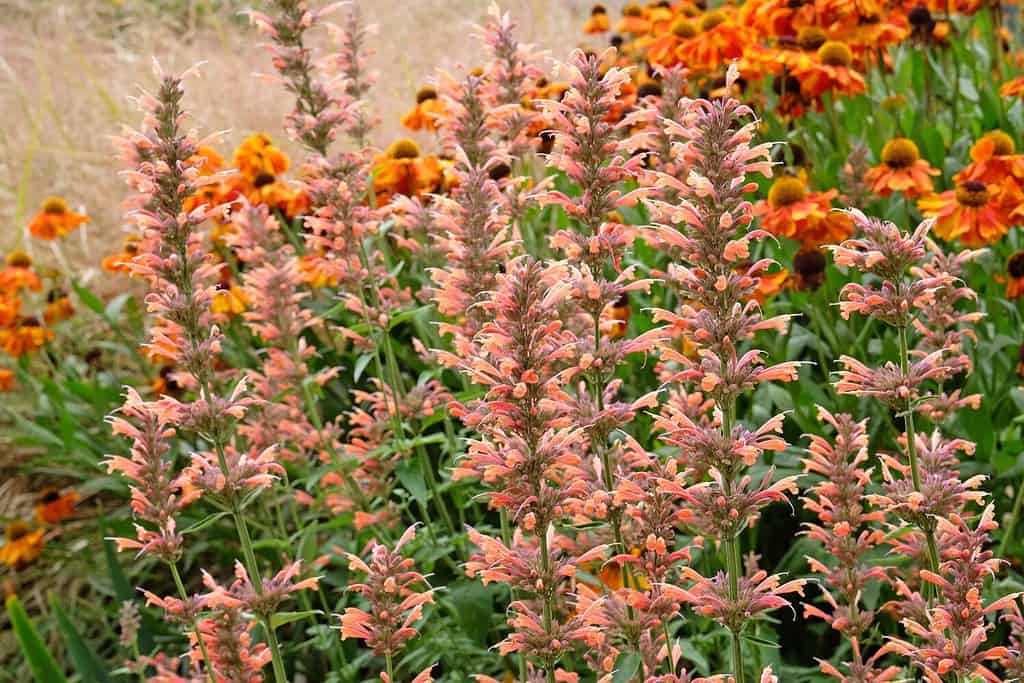
©Alex Manders/Shutterstock.com
12. Coreopsis
Coreopsis blooms bright yellow for six months of the year, from June right up until late fall.
This sunny perennial is related to sunflowers. It’s a native plant that suits Washington gardens and provides essential nectar for pollinators. Gardeners with coreopsis patches have no shortage of bees and butterflies pollinating their fruit and veg.
Plant two-foot-tall cheerful coreopsis in full sun or part shade in well-drained, fertile soil. It’s pretty drought-tolerant once established and doesn’t need maintenance. It simply feeds the bees, and then produces seeds for birds before dying back over winter.
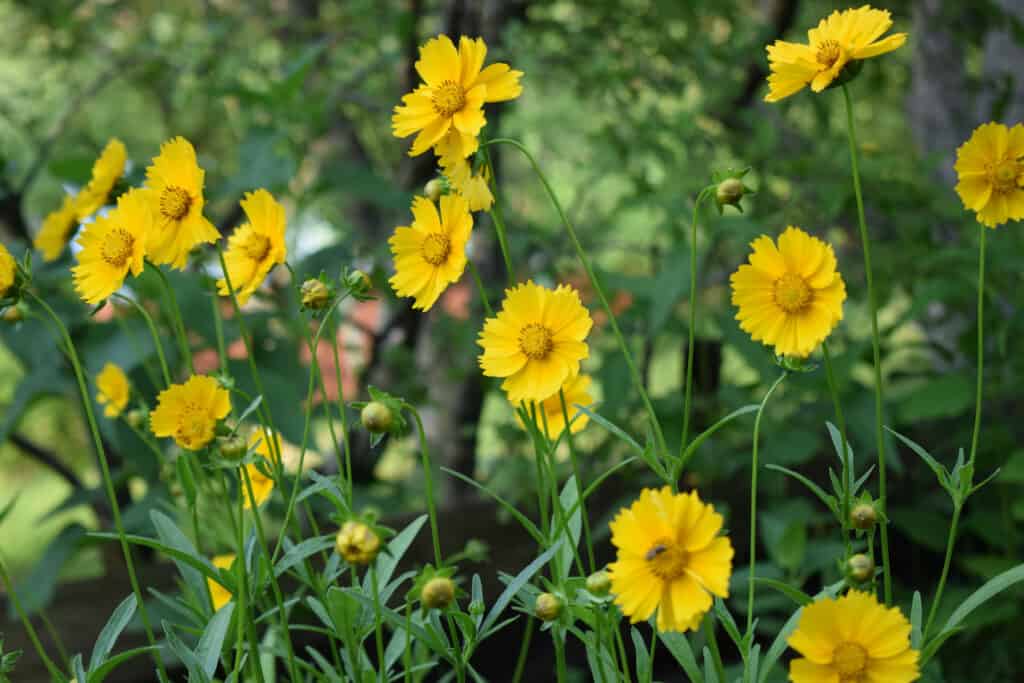
©iStock.com/dianaarturovna









